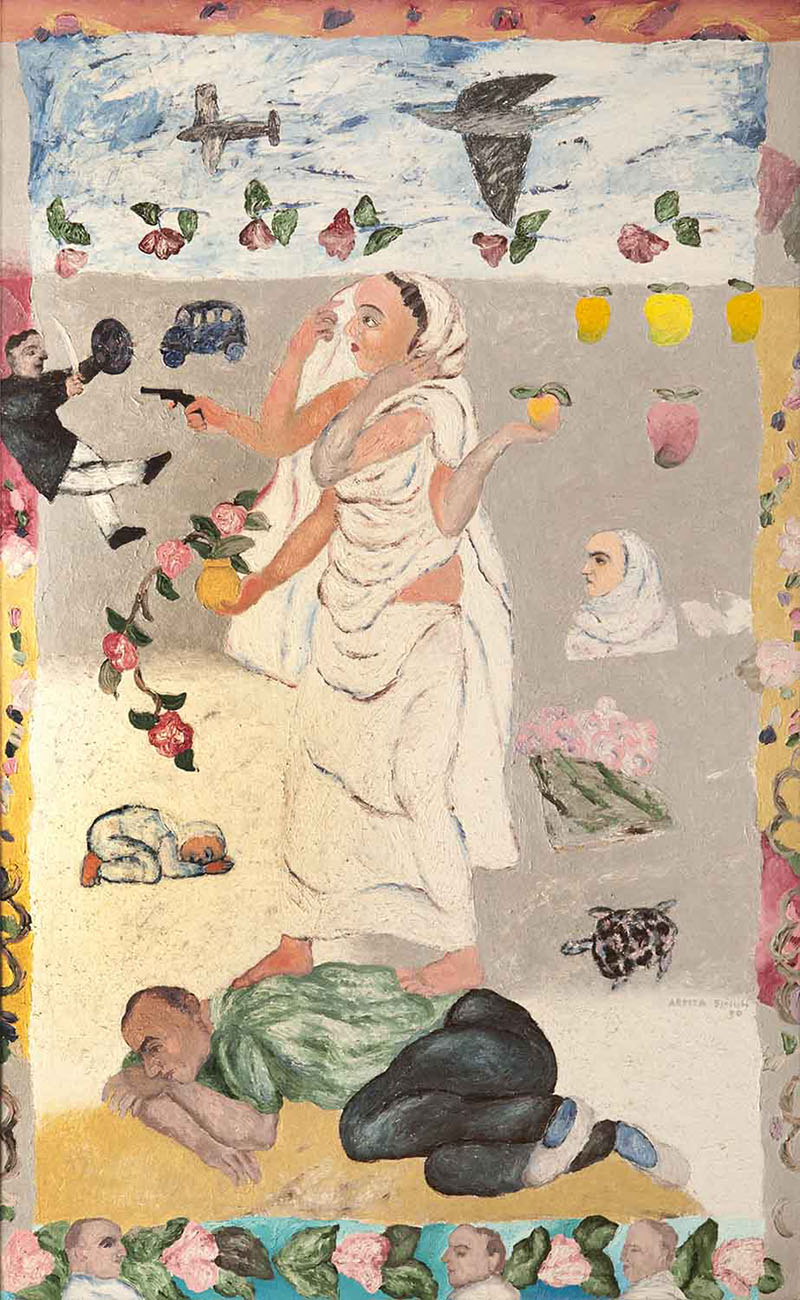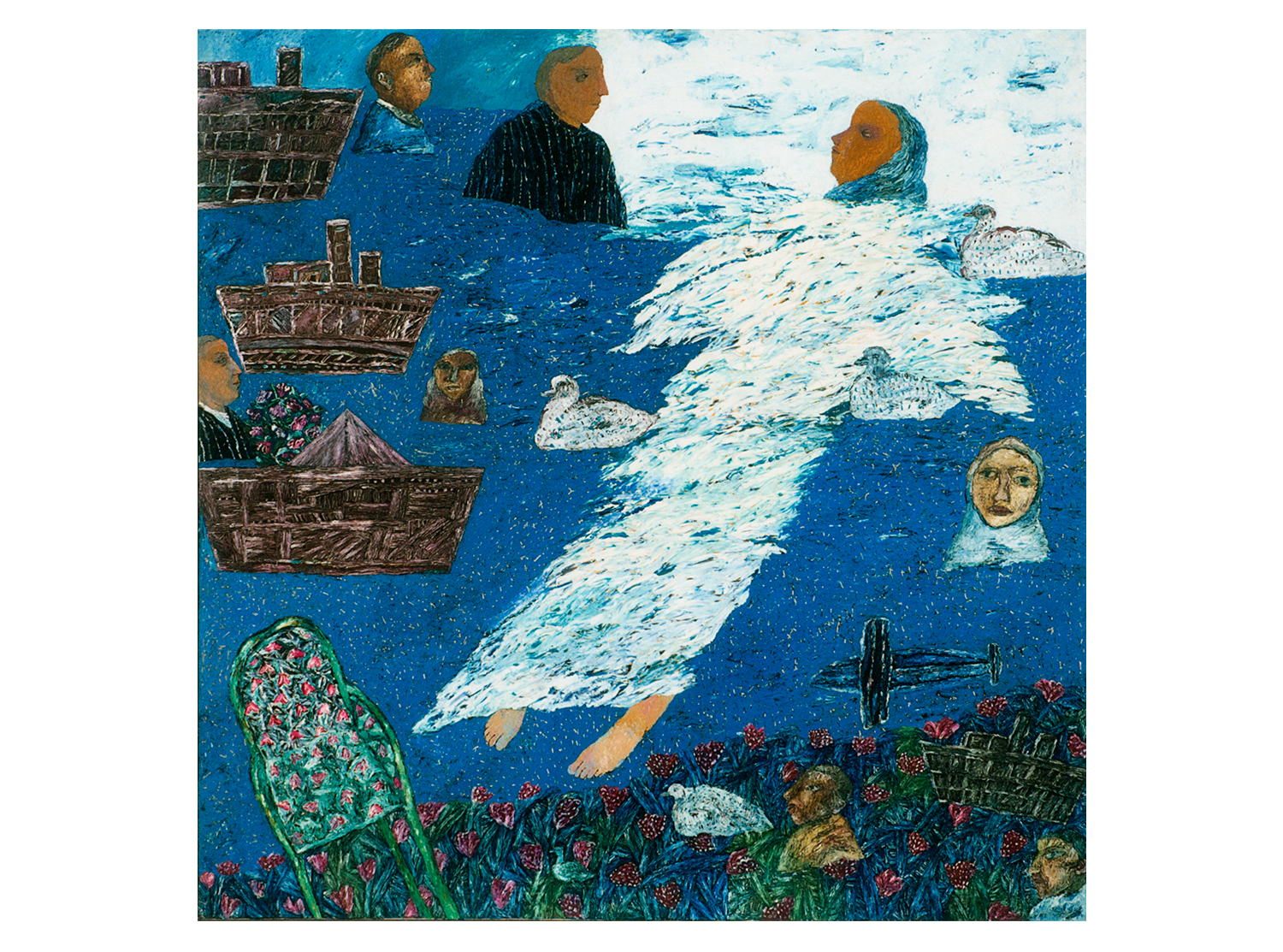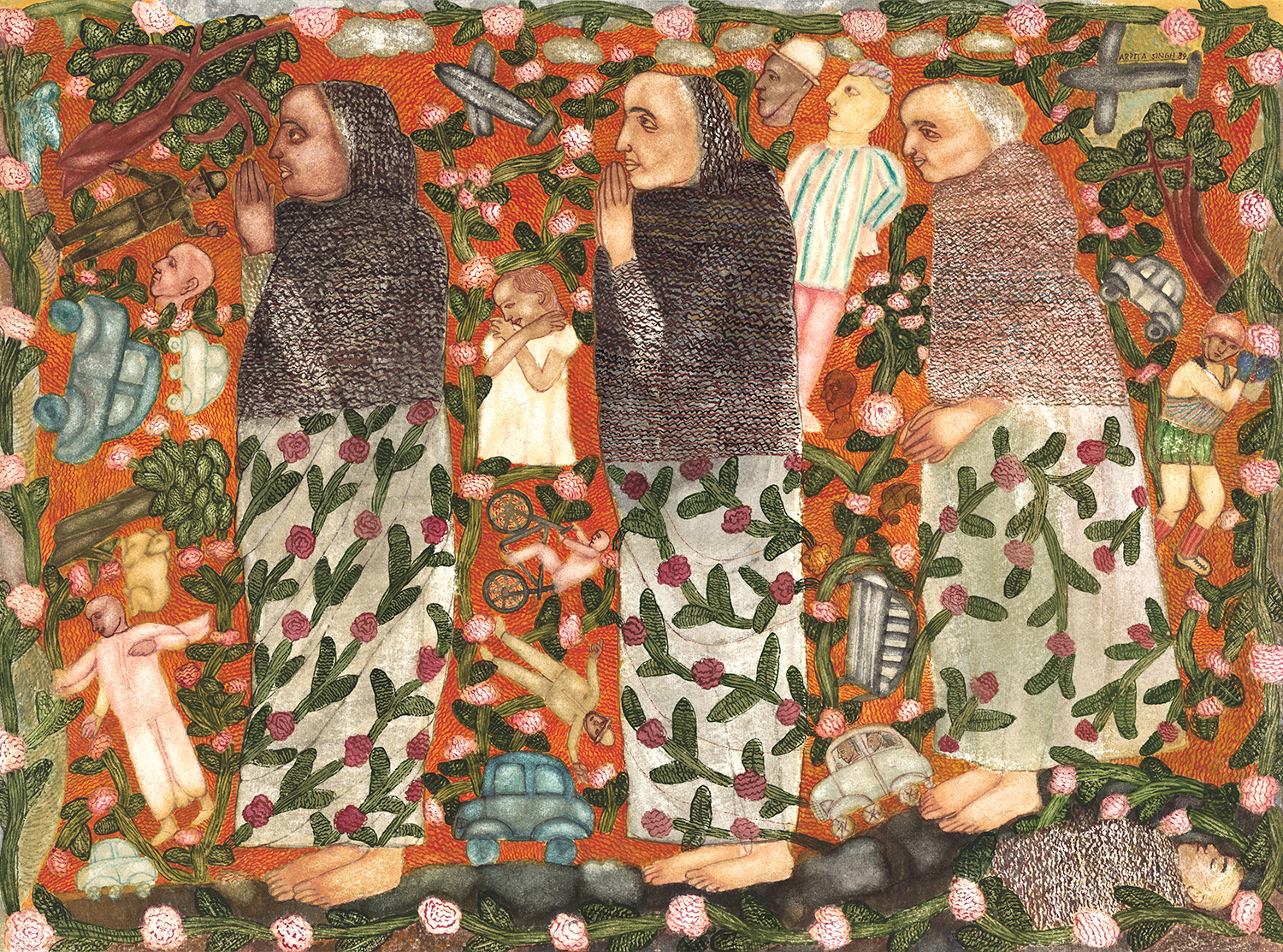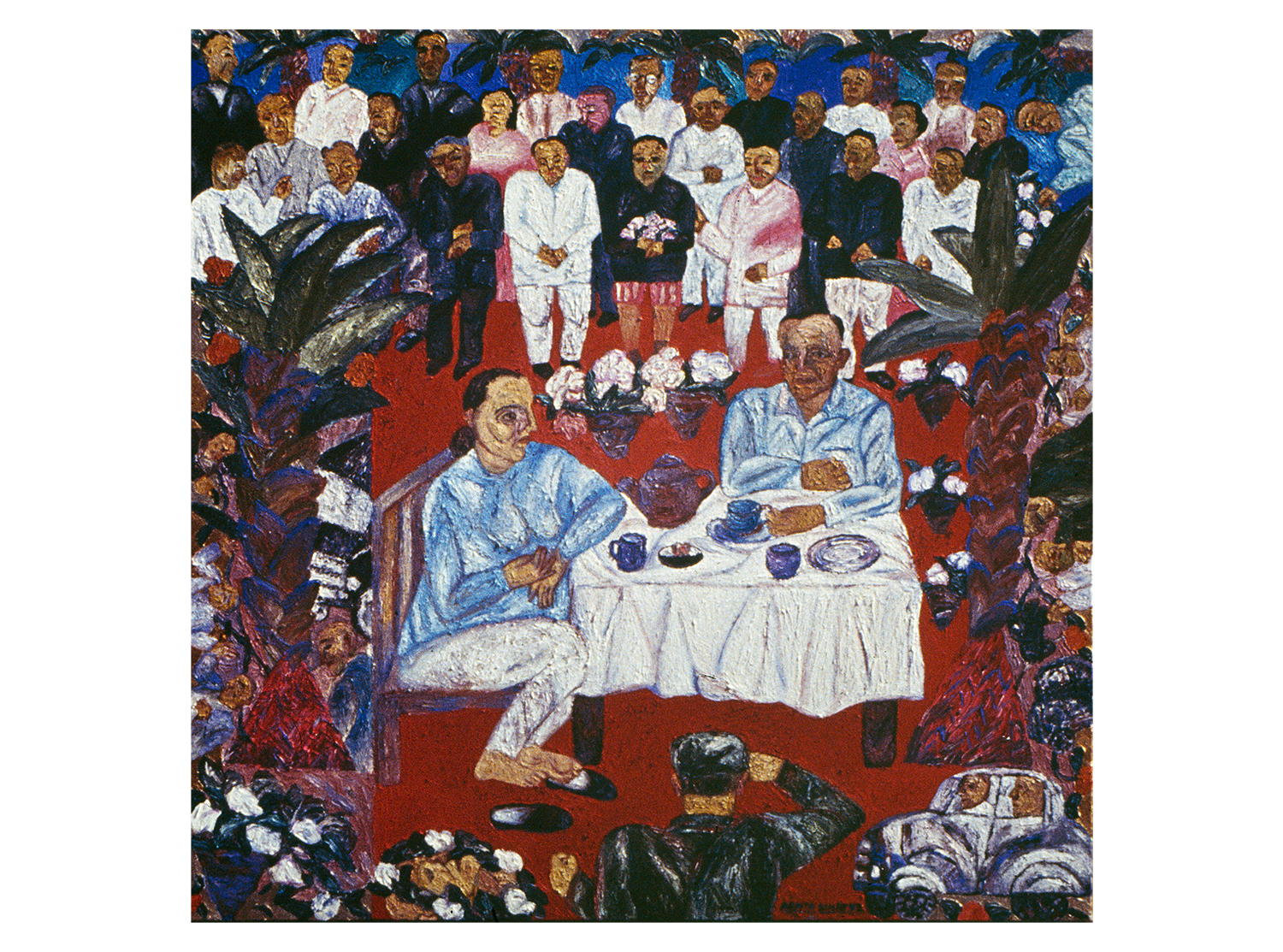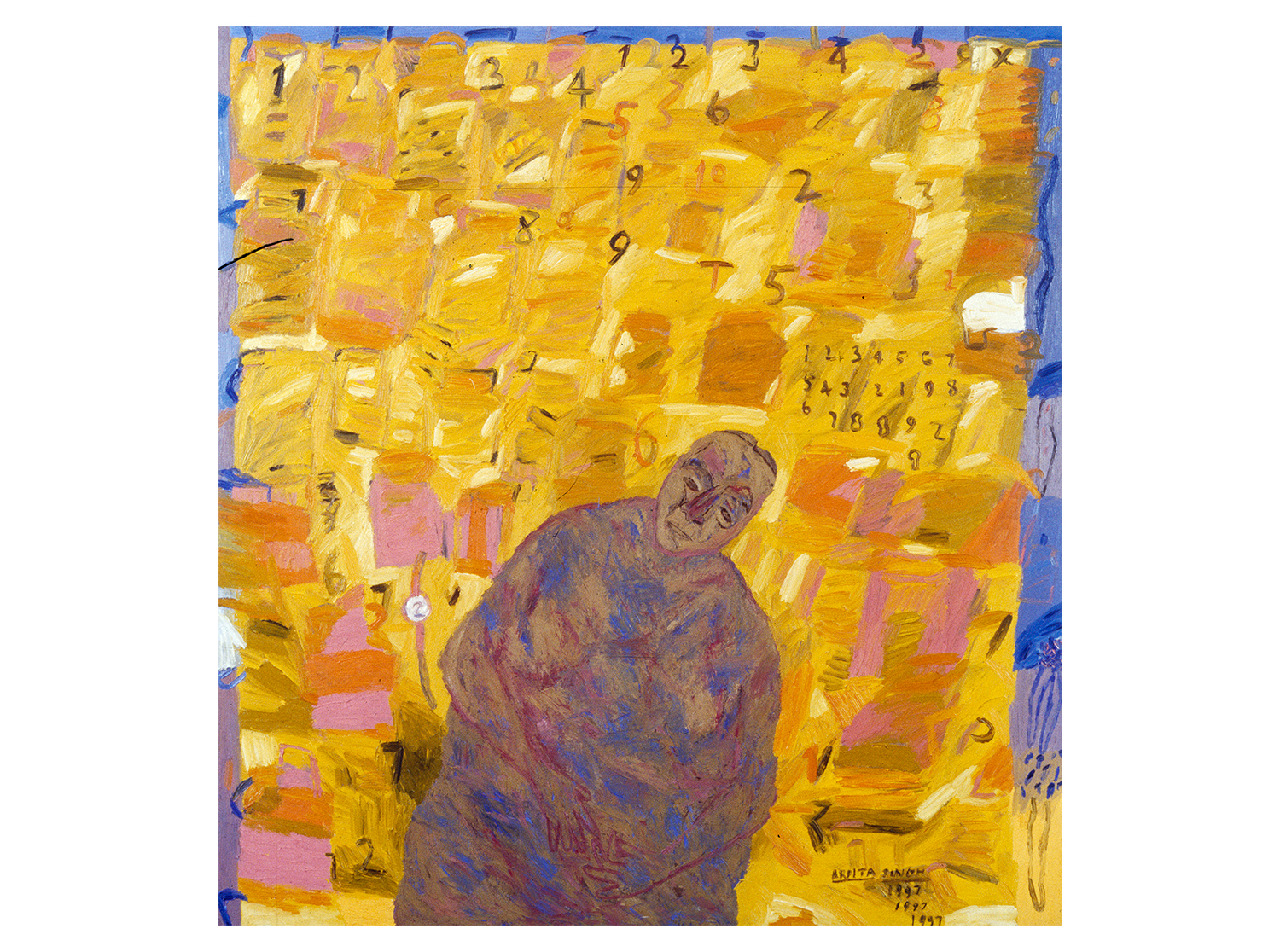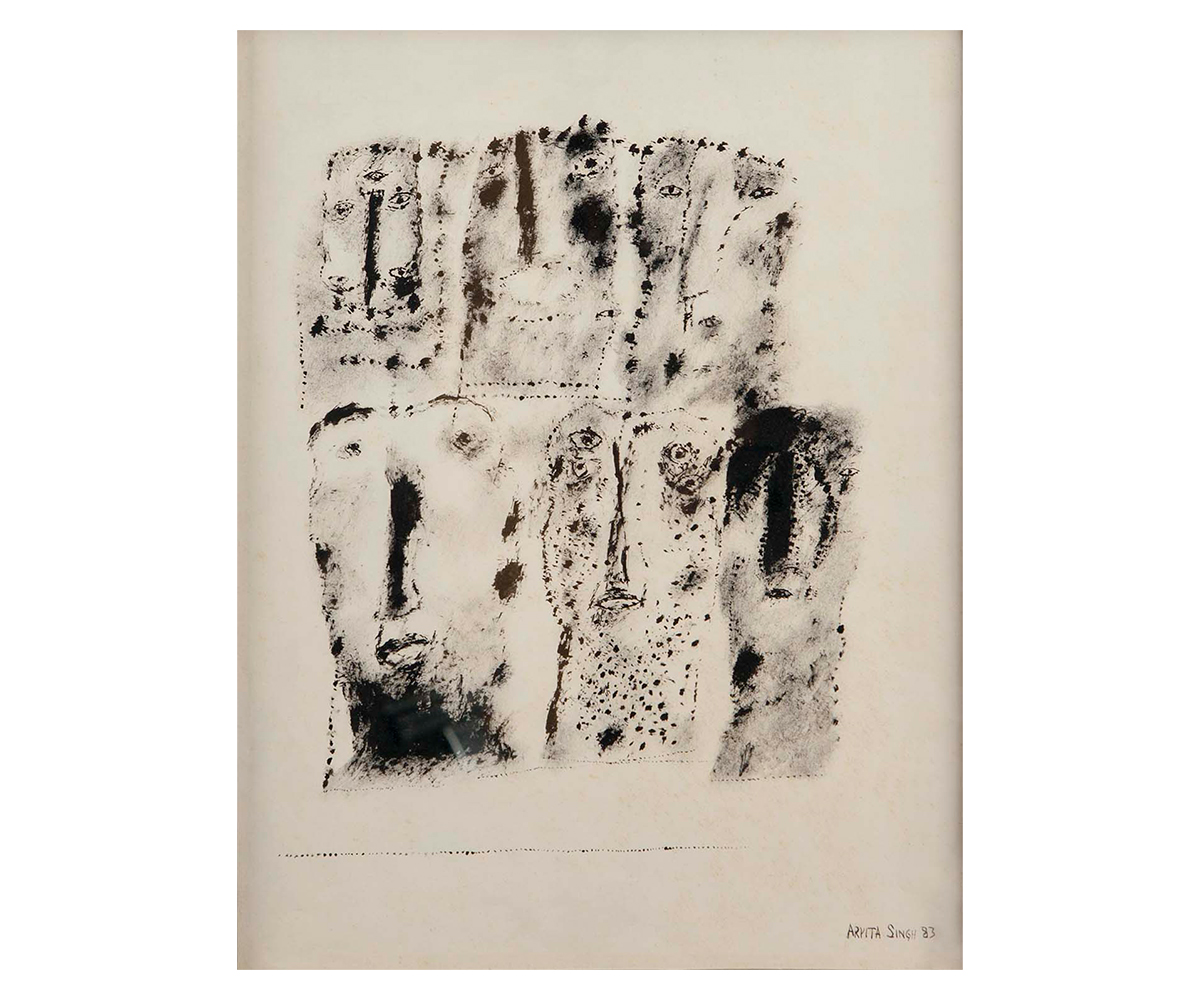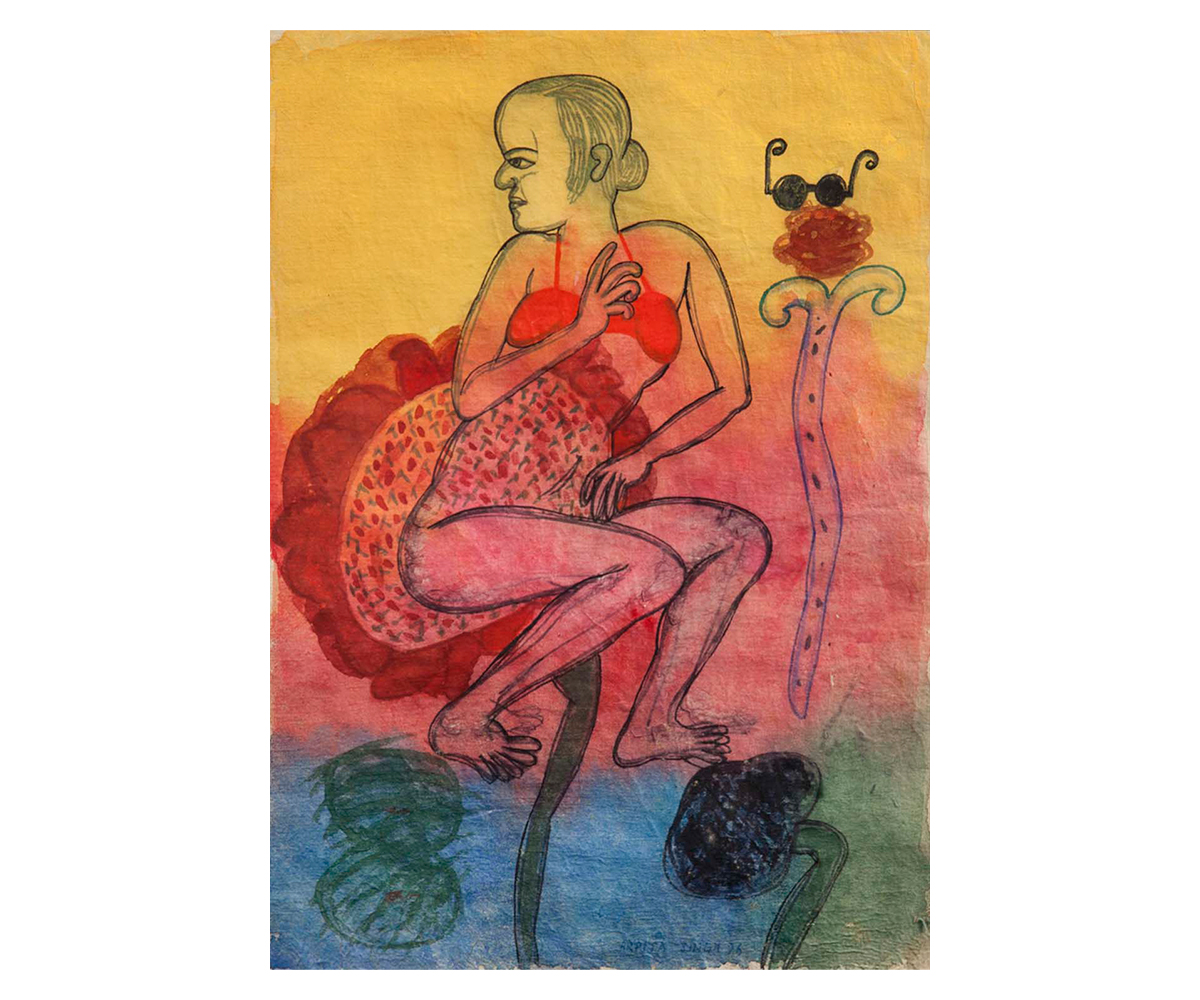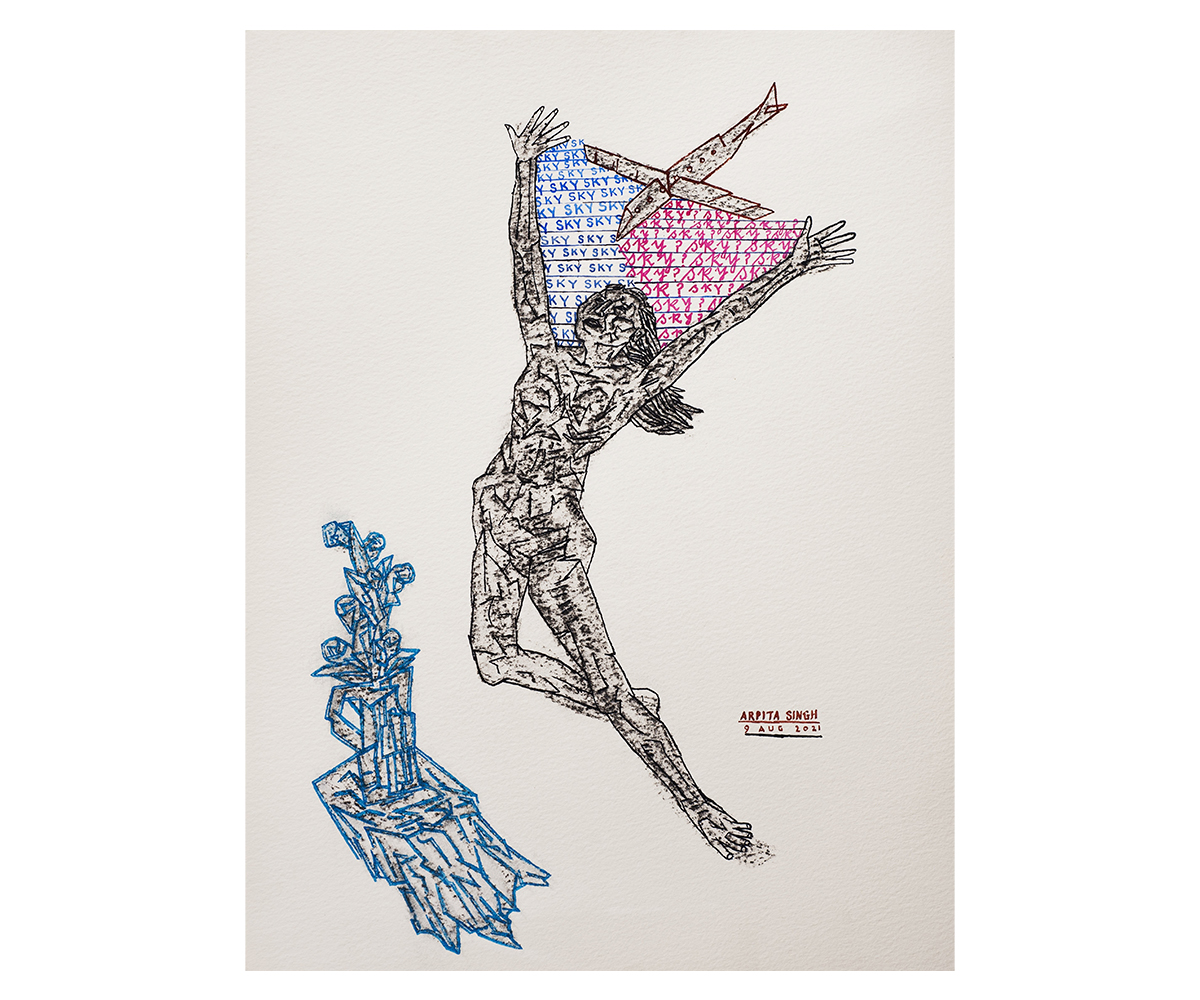ARTICLE
Arpita Singh
Singh’s work can be broadly divided into three phases. Her paintings in the first phase, during the 1960s, demonstrate elements of Surrealism and were often favourably compared with the works of the early Modernist painter Marc Chagall. These works depict people and objects characterised by a free-floating, slightly whimsical quality, which remains a subtle presence in her later figural works. The works of her second phase, through the 1970s, comprise abstract compositions of lines and dots. Showing an apparent contrast to her previous works, these compositions mark, in Singh’s view, a return to basics through a series of exercises in the fundamentals of mark-making, and may have been influenced by Singh’s painstaking work at the Weavers’ Service Centre. Her first solo exhibition was held during this period at Kunika Chemould Art Centre, New Delhi in 1972, followed by several other acclaimed exhibitions in India and abroad. The third and most celebrated phase, from the 1980s onwards, is characterised by a return to figural painting, but with formal structures such as landscapes and narrative and the added element of text, which became a recurrent feature in her subsequent work. Singh has described the element of painted text as inspired by the serendipitous marks resembling Roman letters made by her palette knife.
Much of Singh’s later work is characterised by a continued integration of prior motifs and curiosities, so that visual elements continue to recur, morphing and evolving across paintings but never completely disappearing. Her interest in maps — sparked by a visit to the historical region of Shekhawati — informed her modelling of text into landscapes. The map format of My Lollipop City, Gemini Rising (2005) allowed for a compositional mode where many recurring ideas could be enclosed.
The narrative style of painting also allowed Singh to fashion a visual vocabulary that could eloquently describe the challenges of women in her time and evoke the quiet violence underlying seemingly ordinary scenes. In The Room with Chairs (1991), for instance, a woman is seen lounging on the floor of a peaceful room with a partially visible man holding a gun in the corner. Inspiration from both the modern everyday world around her and popular Indian mythology is evident in works such as Ashvamedha (2008) and Searching Sita through Torn Paper, Paper Strips and Labels (2015). Singh’s use of guns, tanks and aeroplanes in her paintings conflate violence and industrialisation in a deliberate commentary on the extreme speed and inequality of progress in the contemporary world.
Singh’s paintings also portray a range of ideas concerning masculinity. Violence in her paintings is frequently accompanied by the presence of men, who are portrayed as either its agents or subjects. Often accompanied by symbols of war and violence, Singh’s male figures are also frequently depicted holding bouquets of flowers, suggesting a playful and nuanced idea of masculinity, reminiscent of the works of her contemporary, Bhupen Khakhar, who examines middle-class Indian society through a queer lens. In contrast, the women in Singh’s paintings — such as the figure in My Mother — are quiet observers who seem to be aware of their centrality in the image and, like the viewer, appear to be gazing at the world both inside and around the frame. The women in paintings such as Ayesha Kidwai (1988) and Amina Kidwai with Dead Husband (1992) are extensions of the silent spectator, the historical female subject of art and the modern artist, in an innovative variation on the much older questions of the frame and the gaze in the history of painting.
Over the past two decades, she has garnered much attention in the art market. The sale of her composite painting inspired by Tibetan Buddhist art, Wish Dreams (2001), at a Saffronart auction in 2010 made her the most highly valued living female artist in India. She was awarded the Parishad Samman in 1991, the Kalidas Samman in 1998 and the Padma Bhushan in 2011. A retrospective of nearly her entire oeuvre was held at the Kiran Nadar Museum of Art, New Delhi in 2019. Singh’s paintings are also part of the collections at the Victoria & Albert Museum (London, UK) and Peabody Essex Museum (Salem, Massachusetts). Her life and work have been the subject of a monograph, Arpita Singh (2015), by the art historian Deepak Ananth.
At the time of writing, Singh lives and works in New Delhi.
Bibliography
Our website is currently undergoing maintenance and re-design, due to which we have had to take down some of our bibliographies. While these will be re-published shortly, you can request references for specific articles by writing to hellomapacademy@map-india.org.




